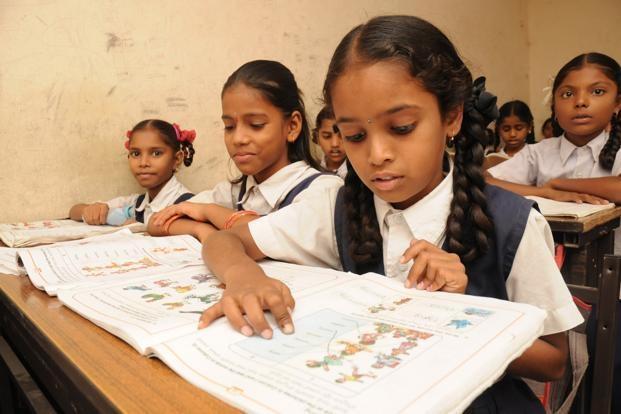Grading States/UTs on the Quality of School Education likely to Increase Regional Inequalities

The quality of school education in the states/UTs will be graded on a 70-point Performance Grading Index (PGI) which contains parameters from school infrastructure, number of teaching posts and vacancies, transparency in recruitment and promotion criteria of teachers etc., PTI reported. Although it has been reported that the Ministry of Human Resource Development (MHRD) is compiling the data that most states as well as UTs have submitted, there are no documents in the public domain– the website of the Ministry of Human Resource Development (MHRD) as of now. Calls made by Newsclick to the offices of the Minister of HRD, Prakash Javadekar, Minister of State HRD, Upendra Kushwaha, the Secretary of the Department of School Education and Literacy, Rina Ray, and others weren’t answered.
The NITI Aayog is also developing a School Education Quality Index (SEQI) side by side. Although the SEQI has 44 indicators under ‘Learning outcomes’, ‘Access outcomes’, ‘Equity outcomes’, and ‘Governance and Management’, as opposed to the 70 indicators in the PGI, reports mention that around half of the 70 indicators in calculating the PGI grade are common.
Admittedly, the index is aimed at helping states identify what their weaknesses are, where they are lagging behind, and planning interventions accordingly. Concerns of the grading system giving rise to increased competition between the states/UTs, for better ranking and the corresponding benefits, are completely valid and legitimate.
"The idea is not to rank the states but grade their performance as ranking may bring unhealthy competition. Grading will help motivate more states to adopt structural reforms in school education," a source in the ministry said. However, on the SEQI portal, it is clearly stated that the “states and UTs will be ranked on their overall performance on the SEQI as well as according to its four constituent domains.”
If one looks at the parameters, it becomes apparent that the focus is predominantly on outcomes and performance rather than on inputs and specific processes. The problem with this is two-fold:
Firstly, inputs also include the funds allocated, and more importantly, transferred to the schools, scholarships for students, grants for infrastructure, pensions for teachers, student enrolment, number of teachers, student-teacher ratio etc.. Now, it has been widely said since long, that inadequate fulfilment of the aforementioned inputs (and others) is one of the main reasons behind the sorry state of affairs of the primary education sector in the country.
Secondly, shifting focus from inputs and processes, regardless of how inadequate it originally was, to outcomes and performance will give a fillip to competition amongst states for funds from the Samagra Shiksha Abhiyan (SSA) – an overarching scheme including Sarv Shiksha Abhiyan, Rashtriya Madhyamik Shiksha Abhiyan and Teacher Education, for instance. This will necessarily increase the gap between the best and the worst performing states and hence, increase inequalities in the quality of school education amongst states/UTs.
The ministry is also planning to set up a Central Institute of Assessment (CIA) which will work with NCERT and the states on pedagogical interventions to improve the learning outcomes.
Get the latest reports & analysis with people's perspective on Protests, movements & deep analytical videos, discussions of the current affairs in your Telegram app. Subscribe to NewsClick's Telegram channel & get Real-Time updates on stories, as they get published on our website.
























